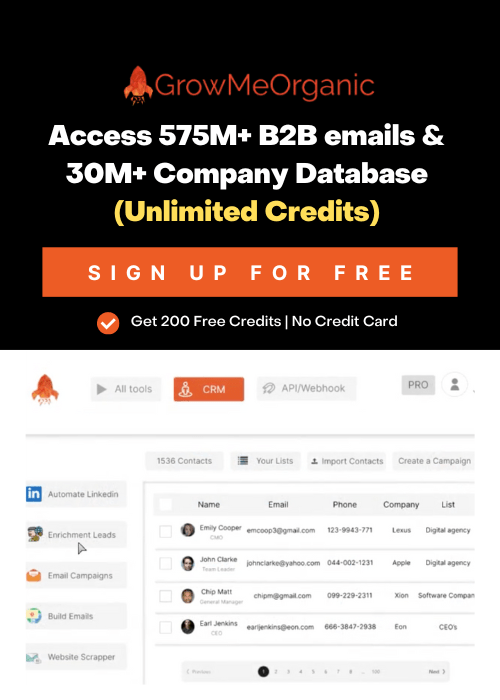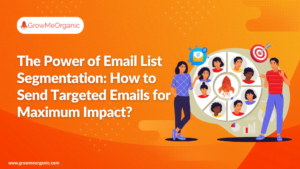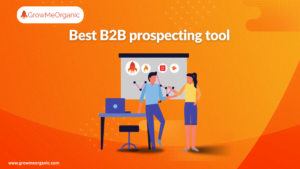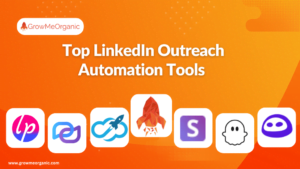There’s no way around it: free traffic sources may not be enough if you’ve only started to build your online presence, especially in competitive niches like real estate, insurance, or finance. But this doesn’t mean you should shy away from maximizing your organic traffic channels, however small they might be at the beginning of your journey.
It may only take half a year to conquer your niche. With the right organic lead acquisition strategies, you can generate leads in bulk while driving them to conversion and turning them into brand advocates. Likewise, compelling and well-timed content can help you outrank stronger brands.
But, of course, it’s easier said than done. For many aspiring entrepreneurs, the entry barrier is already a struggle: choosing a niche where you have a realistic chance at making it to the top, and the right lead acquisition strategies for this niche.
![Best Free Lead Generation Strategies that Actuallly Work [2025 Edition] 8 free lead generation strategies](https://www.growmeorganic.com/wp-content/uploads/2024/11/Zb65uiOBdmx4CRAVTs.webp)
Read on to learn the free lead generation strategies that work in practice, not just on paper.
First Things First: Shortlisting the Niches You Know Well
Before we start, it’s worth mentioning how you can get the traffic you need in principle:
- Drive leads from free traffic sources: website, blog, email, social media, etc.
- Buy purchase-ready leads from lead generators or affiliate marketing networks.
- Generate various leads with paid advertising, endorsement, collaborations, etc.
In practice, chances are you will have to combine at least two of these client acquisition methods to find a synergy between them and ensure top-notch omnichannel experiences for your clients.
Now, to kick things off with organic lead generation, it’s much easier to play to your strengths: a niche where you have expertise, knowledge, and experience. Even if it’s competitive, a strong selling proposition can help you beat the fiercest competitors.
Here are the four possible strategic paths to take:
- If you already run a business and want to ramp up your organic lead volume, you have to develop a data-driven SEO strategy and take it from there
- If you are only starting a business, then you can:
- Choose a niche where you are an expert, regardless of the competition
- Choose the most profitable niche among the niches you’re already interested in
- Choose a high-ticket niche and start building your business from scratch
The good news is that no matter which scenario is yours and the niche you’re in, the free traffic sources and lead generation strategies are more or less the same. This means you can take this framework and – with some niche-specific adjustments – successfully use it to grow your traffic.
Step 1 – Define Your Target Audience and USP
First of all, you have to understand who your ideal customer profile is, what they want, and what you can offer them that other businesses cannot. Even if you already run a business, the USP for free leads might differ from how you convert leads with paid campaigns.
Here’s what you should know about your clients:
| Demographics | Location, age, income, gender, marital status, and niche-specific details. For example, if you’re generating property leads, it would help you know whether the lead in question owns a home |
| Psychographics | Lifestyle, values, motivations, pain points, etc. It’s no secret that purchases are driven by emotions and then justified logically. Knowing the buyer’s psychology increases your conversion potential. |
| History of interactions | For new leads, it’s essential to know how they interacted with your brand across touchpoints before landing where they are now; for returning buyers, it’s important to know their purchase history. |
Collecting profound lead insights manually is impossible, so most businesses use special software to track customers from top to bottom and, using real-time and strategic data, continuously optimize their acquisition campaigns.
Once you’ve studied your customers and the competition – SEO research is explained in the next paragraph – you might already have an idea of how to position yourself in the market. Whether your products are of higher quality, more durable, more comprehensive, or more affordable, you should display these advantages in your USP and deliver this USP loud and clear to your leads.
Here is an example of a unique value proposition for real estate leads:
- “Sell your home 5% more profitable and 25% faster than the industry average. With over 98% of our listings closing within 60 days, we guarantee to match you with the best buyer in the United States.”
This one is geared towards free leads for the real estate niche who want to get rid of their properties quickly while not sacrificing profits – which is every seller, to be fair. However, if you have the track record to back up this kind of USP, it can become a universal lead magnet.
Step 2 – Do an SEO Research
SEO might be your best free traffic channel, especially if you’re a new company with no social media presence. By creating compelling content that matches the intent of your target buyers, you can slowly but steadily climb the search rankings, gaining footing in the SEO game—especially with the help of the best SEO agency in Singapore to guide your efforts.
However, SEO traffic acquisition requires a strategic approach that will factor in the competition in your niche, your size, and how quickly you can produce content while keeping the quality constantly high – and you need to continuously analyze your campaigns to stay on top.
Here’s your basic SEO principle:
- Start with low-competition keywords that you can realistically rank for and gradually, month by month, shift to more competitive keywords if you’ve covered all easy keywords.
Let’s assume you are going to sell auto insurance in New York.
If you’re not exclusively offering one type of auto insurance, it would be logical to check the competition for keywords like “auto insurance New York” in Ahrefs:
![Best Free Lead Generation Strategies that Actuallly Work [2025 Edition] 9 displaying the research for a single keyword](https://www.growmeorganic.com/wp-content/uploads/2024/11/Auto-insurance-new-york-SEO-research-step-1.png)
Remember, you need low-competition keywords with high volume, so the first parameters to pay attention to are the keyword difficulty (20) and the search volume (2,100 queries per month). Another important one is CPC (cost-per-click) – how much advertisers are willing to pay for a lead coming by this keyword – showing you the commercial potential of this keyword.
Next, you can scroll down the page to see the list of websites that are currently ranked for the chosen keyword:
![Best Free Lead Generation Strategies that Actuallly Work [2025 Edition] 10 displaying the top-10 websites that rank for a chosen keyword](https://www.growmeorganic.com/wp-content/uploads/2024/11/Auto-insurance-new-york-SEO-research-step-2.png)
As you can see, despite the allegedly low difficulty (22), the lower DR (domain rating) for a top-10 website is 75; in other words, it would be almost impossible to hit the top 10 with this keyword for a new company.
But it’s only one keyword – to build a long-term content marketing strategy, you need all keywords pertinent to your brand.
For this, check the Matching Terms and Related Terms tabs:
![Best Free Lead Generation Strategies that Actuallly Work [2025 Edition] 11 how to choose the right keywords from the SEO perspective](https://www.growmeorganic.com/wp-content/uploads/2024/11/Auto-insurance-new-york-SEO-research-step-3.png)
Now you see the full list of keywords that contain the four words that make up your original keyword: auto, insurance, New, and York. However, most of these 300 keywords are quite competitive, so you need to narrow it down to the simplest keywords.
For this, set the KD filter to 10 and the Lowest DR filter to 10:
![Best Free Lead Generation Strategies that Actuallly Work [2025 Edition] 12 how to choose low-competition keywords from the SEO perspective](https://www.growmeorganic.com/wp-content/uploads/2024/11/Auto-insurance-new-york-SEO-research-step-4.png)
Now you can see the keywords that are 10 or lower in difficulty and have at least one brand with a domain rating of 10 or lower ranked in the top 10. These are likely the easiest keywords to push your SEO rankings as a beginner.
As you’ve launched your website and get your content ranked, you can see the actual content performance in Google Search Console. Remember, Ahrefs doesn’t show the real numbers but predicts the performance based on its algorithms, while GCS shows your real performance.
![Best Free Lead Generation Strategies that Actuallly Work [2025 Edition] 13 Google Search Console showing the general performance of the website across clicks and impressions](https://www.growmeorganic.com/wp-content/uploads/2024/11/Auto-insurance-SEO-research-using-GSC.png)
Step 3 – Focus on Your Website, Blog, and Emails
The three marketing staples – your website, blog, and email – work equally well for free and paid leads as long as you stick to these time-tested rules:
- Combine promotional and educational content. For example, if you’re targeting free roofing leads, you should probably also post DIY blogs, even if this may seem counterintuitive (if they can do it on their own, why buy my services?).
- Covers topics better than your competitors. Almost all in-demand topics – ones providing large keyword volumes – are already covered in abundance, so you have to find your unique approach, be it your unique expertise, article volume, or something else.
- Be consistent on all fronts. From branding colors to a posting schedule, ensure consistency so it’s easier to recognize and remember your brand. Make it as simple as possible for your customers – allow them to buy your products in a few clicks from anywhere.
Regarding the best type of content, it’s simple: the more interactive it is, the better. Videos, images, infographics, quizzes, and embedded Google maps are a must to keep pace with the competition.
How To Generate Email Leads
When designing your email sequences, make sure to factor in the recipient’s stage in the sales cycle, so everyone gets what resonates with their intent. No matter the promotional channel, warm up your leads so they can connect to your brand on an emotional level. A premature hard sell is a money killer.
At the same time, the sales cycle should be reasonably short. For example, to convert business email leads, you can try AMP emails – ones that provide an app-like experience, allowing the recipient to make a purchase right from the email without going to the company’s website.
And don’t forget about re-engagement emails. Your emails might occasionally get lost among the clutter of other emails, so it makes sense to try to re-engage your customers several times before you exclude them from the mailing list. Strike a balance between being helpful and annoying.
Step 4 – Build the Right Social Media Presence
For some companies, social media traffic may overshadow website and blog traffic, but it rarely happens overnight. A much more realistic picture is when you’re focusing on two or three social media channels to ensure your consistent presence there.
Most social media are heavily visual-focused and built around storytelling, so you should master photo and video shooting to gain a following.
However, there’s one exception to the video-focused platform: LinkedIn, a place for research papers, case studies, and borderline-scientific content. Here, you don’t need outstanding video-making skills to generate free B2B leads; rather, you need insightful data to share.
The last mandatory social media is Facebook – at least, you have to consider it because of its large user base. Having the largest pool of clients across industries, Facebook isn’t necessarily geared towards promotional campaigns, but you surely need to have some presence there.
Step 5 – Launch a Referral Program
Once your free lead generation campaigns are up and running, and the trickle of customers is getting bigger, the next logical step would be to launch a referral program so your satisfied clients can snowball your traffic.
Here’s how to make your referral program work:
- Offer worthy rewards. The best strategy would be to offer monetary rewards to referrals. Otherwise, make sure the reward motivates referrers; for example, discounts may not incentivize referrers who’ve already bought everything they needed from you.
- Implement referral reward tiers. Increasing referral rewards as referrers bring in more referees is a great strategy to keep referrers engaged. For example, you can increase the referral rewards by 1% for every 25 invited referees.
- Incentivize both referrers and referees. The reward for referees doesn’t have to be as big as for referrers, but make sure they feel like they’ve got lucky with the offer.
Automate and Monitor Your Lead Generation To Stay Ahead
Last but not least, automate your lead generation and analytics as much as possible. Technologies develop at breakneck speed, so it’s critical to stay up to date with the software. What took hours yesterday may take seconds today – make sure not to miss out on a breakthrough tool that can save you tons of time.
Frequently Asked Questions
Q 1. What are the easiest and the most difficult niches for generating free leads?
It would be safe to say that the more profitable the niche, the stronger the competition. For example, niches like insurance, real estate, and finance are extremely competitive, whereas some low-ticker products are less competitive. You can check the competition level using SEO tools like Ahrefs.
Q 2. What time does it take to generate organic leads?
If you’re creating a blog or website from scratch, it may take around a year to gain some footing in the game and rank well for long-tail keywords. For the content to reach its peak SEO performance, it usually takes a few months, so don’t expect the results immediately unless it’s time-sensitive content.
Q 3. What are the best free traffic sources?
The best free traffic sources are ones that can generate leads over a long time without extra effort: websites, blogs, forums, referral programs, and sometimes also social media. Evergreen content that ranks well can generate thousands of leads over months and years while only costing a few dollars to update (if necessary).
About Post Author
Anant Gupta
Growth Hacker, Marketing Automation Enthusiast & Founder of GrowMeOrganic







